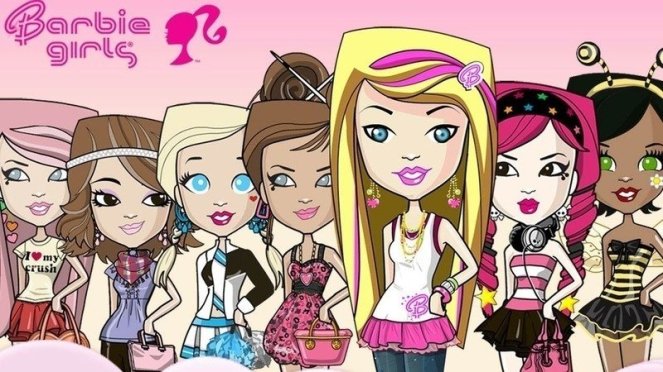The excitement of returning home from school and logging straight onto the family computer in the study, is one I vividly recall. After enjoying afternoon tea, to which usually included cheese and biscuits, I would race onto the computer and pull out of the draw my Barbie MP3 player. Barbiegirls.com was the first online virtual world specifically for girls, to which I had immersed myself in during my primary school years, developing friends worldwide.

The idea of a customisable Barbiegirls MP3 player had grabbed my attention from when I was only 10 years old. Although the game was free, as I had pre-purchased the real life MP3 player, I was granted VIP access, unlocking more games and locations. From designing my own virtual room, playing games online, watching videos and having real-time chats with other players, Barbiegirls.com was a social sphere.
The MP3 players were designed specifically to replicate the avatars that were displayed on the online media form. My group of 3 friends from primary school would plan during the school day what time we would log onto Barbiegirls.com, ensuring we would all be online at the same time.

Each player was able to create their own unique and personalised avatar, “…a virtual representation or proxy for the player” (Edgar 2016, p. 52). After selecting an avatar which closely resembled my own features, I would purchase clothes and accessories for my avatar using the “in-game” currency referred to as B-Bucks. However, depending on the rules and programming of specific online virtual worlds, individuals can create avatars that are starkly different from their own properties, specifically changing their age, gender and ethnicity. In turn, avatars across various digital media forms can be “…potentially highly fluid, in its appearance, allegiances and behaviour traits” (Edgar 2016, p. 53).

The virtual world radicalises the experience of mutual relationships and interaction. The following media form enabled open forms of communication with other players online. Through a chat system called, “B Chat”, players were able to send messages to others, with the permission from a parent or guardian. I recall my Mum agreeing to let me join this virtual community as a result of the websites safety approach, which emphasised players ability to block other users and the monitoring and controlling of chat rooms via the Barbiegirls.com administration.

The facilitation of this this form of interaction allowed me to create friends online to whom I believed I shared similar interests with. Online virtual worlds can create a community which is “…built on relationships that promote special kinds of connections among people” (Mohd Affendi, p.4). Despite only being able to play online for 1 hour of an afternoon, I remember feeling a sense of belonging within this media form. Barbiegirls.com was not only interactive and enjoyable space, but it offered players to express their creativity and individuality throughout the games and their unique avatars.
Brittany

Reference List
Amazon n.d., Barbie Girls MP3 Player, image, Amazon viewed 28 August 2018, <https://www.amazon.com/Barbie-Girls-MP3-Player-Pink/dp/B000PD73P2>.
Castellane, G 2017, Barbiegirls.com – The First Virtual World for Girls, image, Gretchendeca viewed 29 August 2018, <https://gretchendeca.carbonmade.com/projects/6534189>.
Change.org n.d., Bring Barbie Girls Back, image, Change.org viewed 28 August 2018, <https://www.change.org/p/mattel-bring-barbie-girls-back>.
Edgar, A 2016, ‘Personal identity and the massively multiplayer online world’, Sports, Ethics and Philosophy, vol. 10, no. 1, pp. 51-56.
Fanpop n.d., Barbie Girls Logo, featured image, Fanpop viewed 28 August 2018, <http://www.fanpop.com/clubs/barbie-girls/images/24304524/title/barbie-girls-logo-photo>.
Mohd Affendi, S 2008, ‘Understanding the virtual community of gamers’, Encyclopedia of Networked and Virtual Organisations, pp. 1-14.


